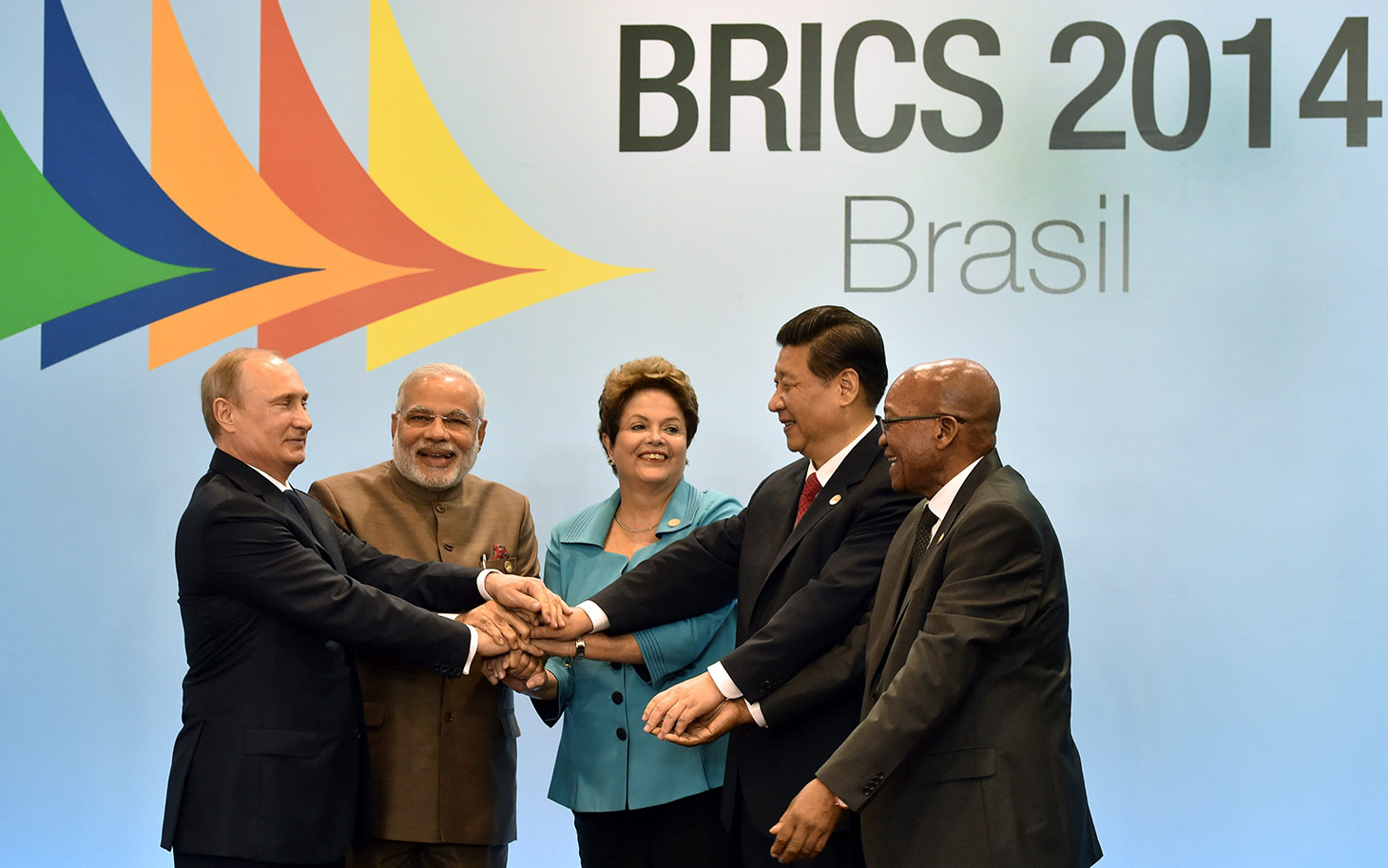In July, after several months of discussion, the BRICS countries (Brazil, Russia, India, China, and South Africa) have finally established the New Development Bank. With an initial capital of $50 billion and a $100 billion reserve fund, the new institution will offer development finance on a global scale for the BRICS and other developing countries, particularly making electricity, transport, telecommunications and access to clean water supplies a priority. While many view this initiative as an alternative to the World Bank and the International Monetary Fund, others worry that the unequal economic standing of the existing member countries will lead to a disappointing performance of the New Development Bank.
On the one hand, the emergence of an alternative global bank funded by economically strong but still developing countries such as the BRICS is exciting news for many. The World Bank and International Monetary Fund (IMF) have provided lending capital for the international community since the end of the Second World War, but their lending conditions and voting organization have always been highly controversial.
The Structural Adjustment Programs that the World Bank and the International Monetary Fund impose upon their borrowers include currency devaluation, austerity measures, market liberalization and privatization of state-owned companies. While the Bretton Woods institutions repeatedly assure the international community these conditions will contribute to the nation’s economic development in the long run, results have largely shown otherwise. “The Lost Decade” in Latin America during the 1980s and the ongoing struggle in Jamaica to overcome its economic crisis are just a couple of examples of the catastrophic consequences that the Structural Adjustment Programs have had upon developing nations across history.
In contrast, the details of how the New Development Bank will approve loans are still unclear, but the BRICS’ heads of state have declared that the loans will have fewer restrictions and delays than those of the the World Bank. Jose Alfredo Graca Lima, Under-Secretary-General for Political Affairs for Brazil, said that the Bank would be modeled after the Chiang Mai Initiative of Southeast Asian countries. In this initiative, nations can currently withdraw up to 30% of their quota without being subjected to the IMF conditions.
The New Development Bank also promises to divvy up influence differently than the World Bank and IMF do. Both the World Bank and IMF do not give their member nations equal voting power, but instead a member country’s quota defines its financial and organizational relationship with the organization: The top five shareholders (the United States, Japan, Germany, the United Kingdom and France) hold nearly 40 percent of total voting power at these institutions, while BRICS together only wield about 11 percent of the votes at the IMF. Considering that China and India each have about 20 percent of the world’s population, and that the BRICS comprise about one-fifth of the world’s economy, the voting distribution in the World Bank and the International Monetary Fund is evidently unrepresentative of both global population and economic trends.
The New Development Bank seems to offer a more equal voting power: Each BRICS nation has contributed $10 billion to the lending fund and consequently each nation will have an equal say on the allocation of the money and the approval of loans. This effort to maintain an equal-share voting basis of the member countries is an appealing alternative from the Bretton Woods institutions’ policies, and has been applauded by many.
Admittedly however, the reality is that the economic situation between the BRICS themselves is far from equal and it will be a challenge to maintain the atmosphere of democratic decision-making within the new bank. For instance, the structure of the New Development Bank’s reserve fund does not enjoy the lending fund’s egalitarian characteristics. For that trust, China contributed with $41 billion — almost half of the total deposit. Even though that fund is to be used only in case the member countries have balance of payment problems (and not for loans), the unequal economic reality of the BRICS is evidenced.
Furthermore, in spite of this new alliance, political tensions between the member countries will continue to be present in their relations. China’s policies of undervaluing the Yuan have been criticized by Brazil and India in the past, since Beijing’s refusal to let it appreciate has led to problems in these countries’ manufacturing industries. Furthermore, although the currency has not been officially announced yet, many believe that the New Development Bank’s loans will be given in Renminbi. This decision will not only mark a significant change from usual loans in American dollars, but will also continue to strengthen China’s presence in the global economy, and accentuate the economic development gap between the BRICS.
Even though both the BRICS’ New Development Bank, and the World Bank and the International Monetary Fund have emphasized they will aim to work together, there are many who hope that the initiative will eventually replace those Bretton Woods institutions. The New Development Bank certainly has the potential to become a prominent institution in the international economic arena, and perhaps someday even replace the World Bank. However, the initiative’s structure has also raised questions about its equal-sharing power and stability. The New Development Bank is just starting and will most likely experience significant changes in the months to come. However, it will be up to the BRICS heads of state to ensure that cooperation remains equal, and that the bank truly offers an alternative source of funding for developing countries.
